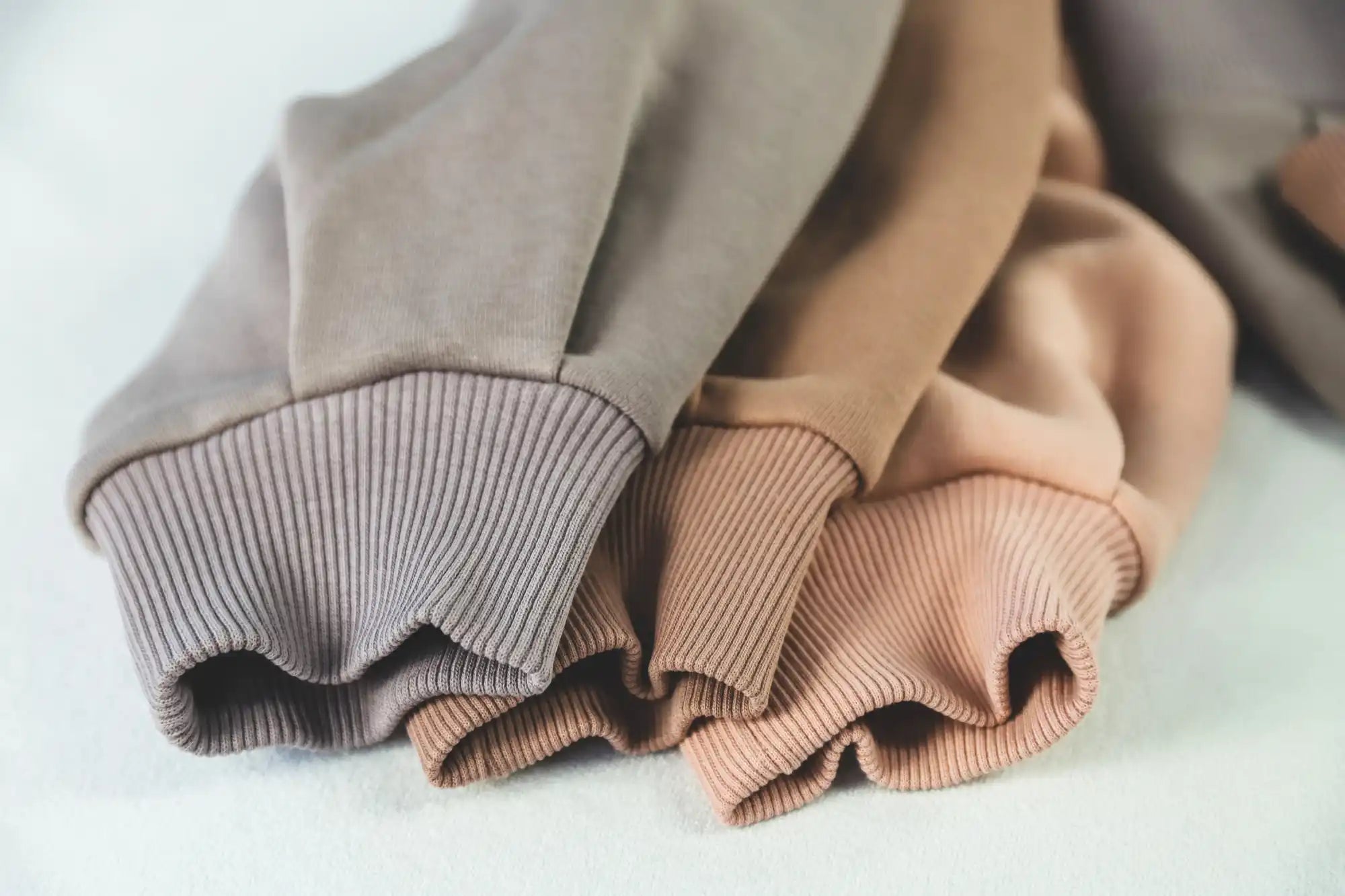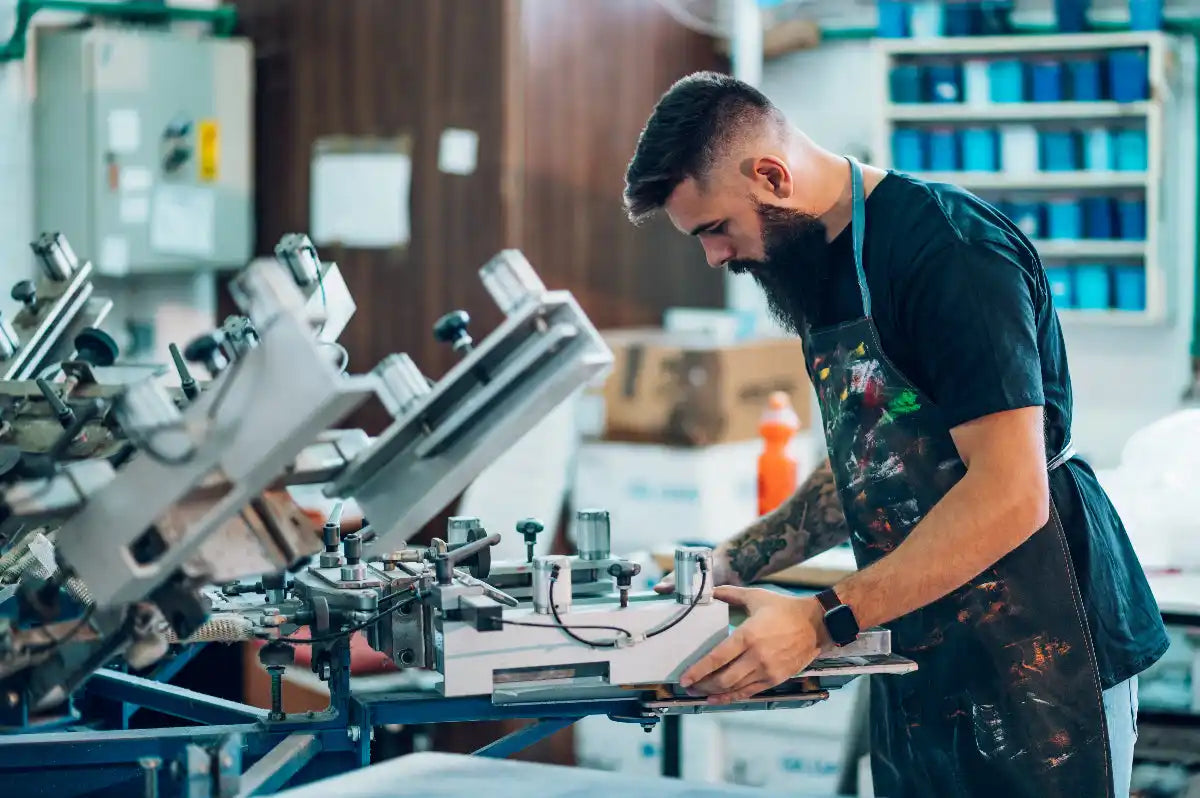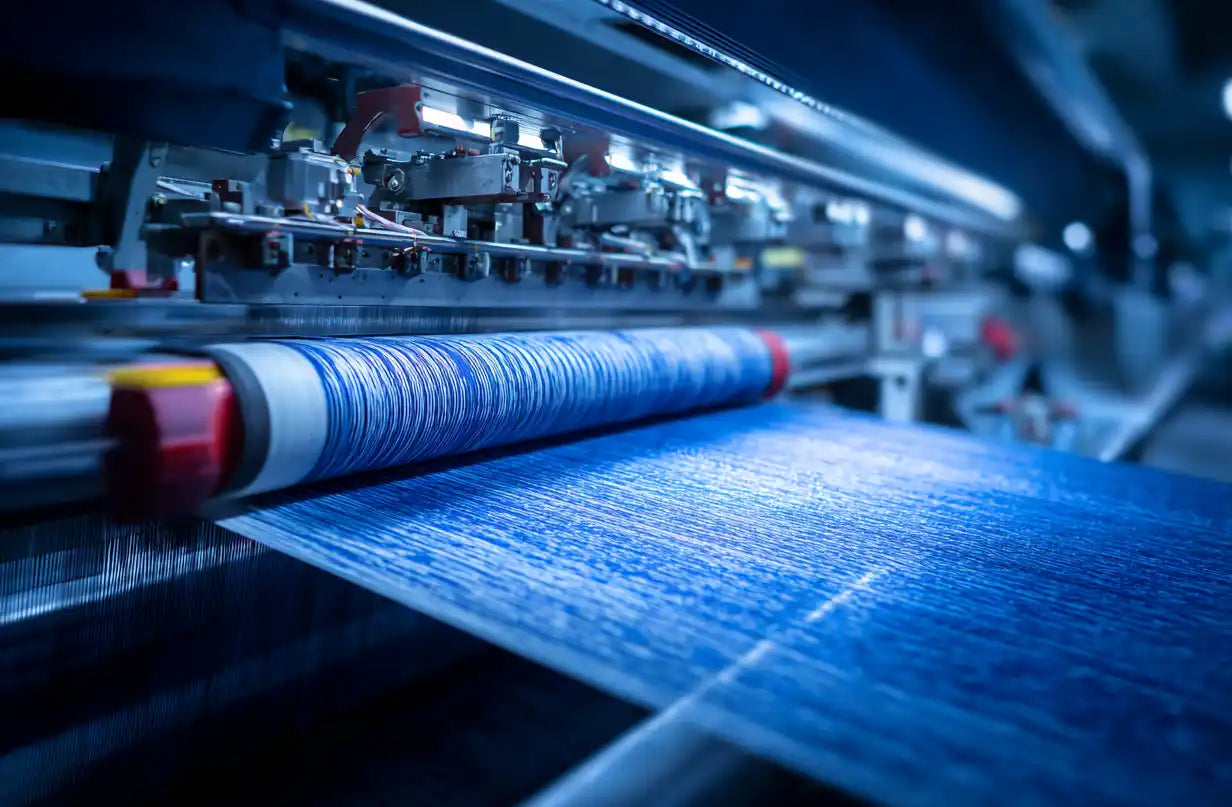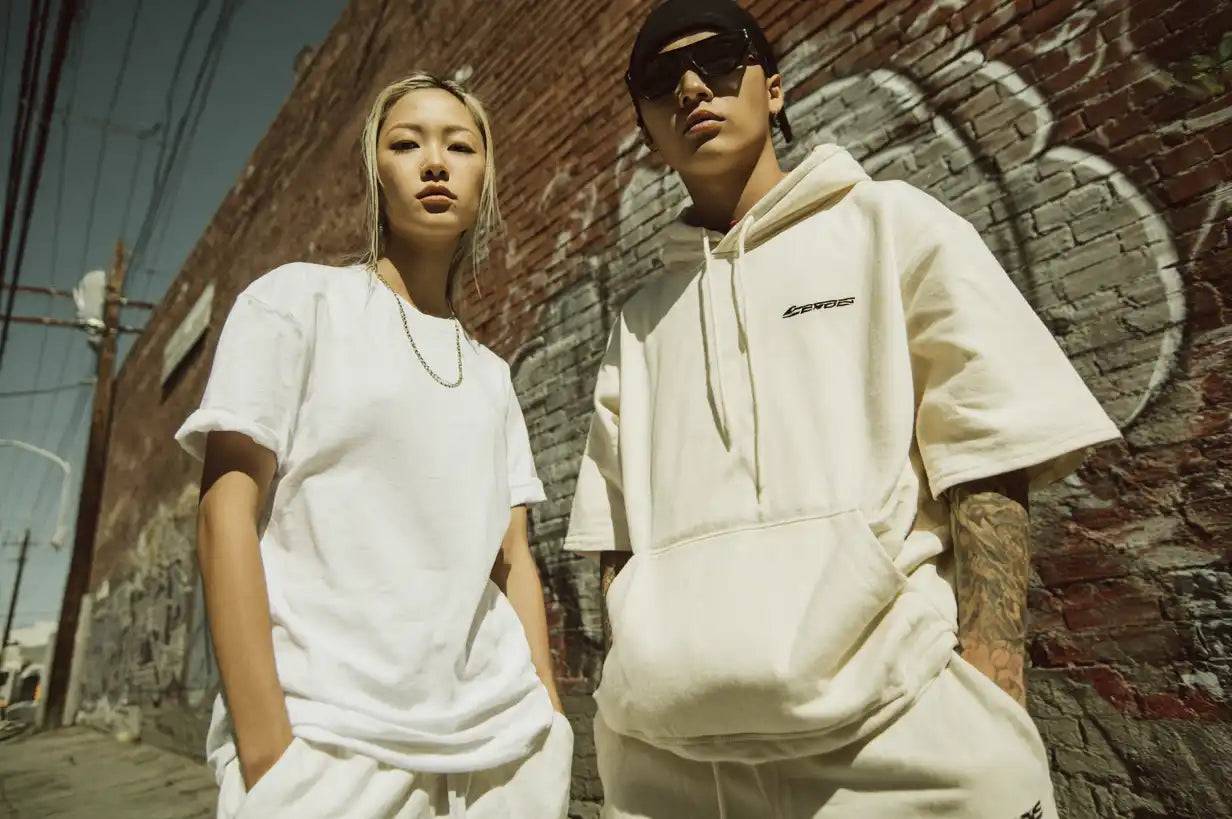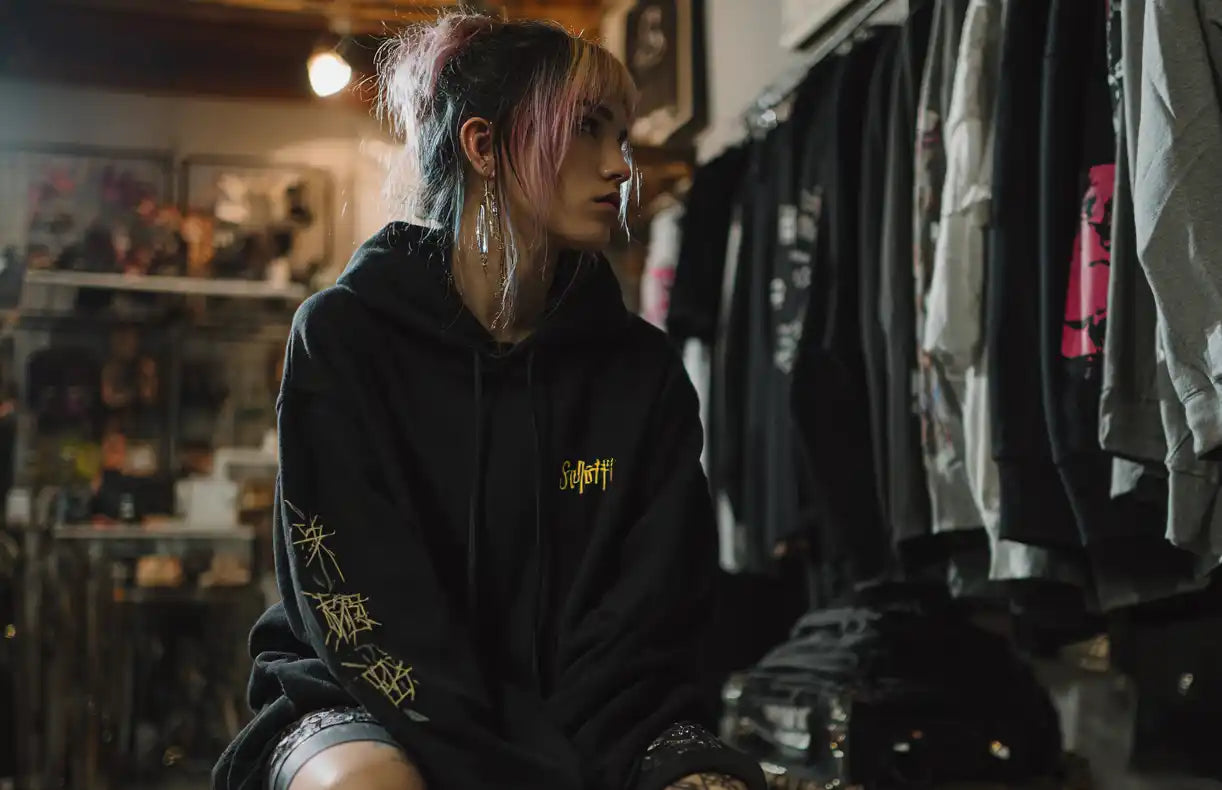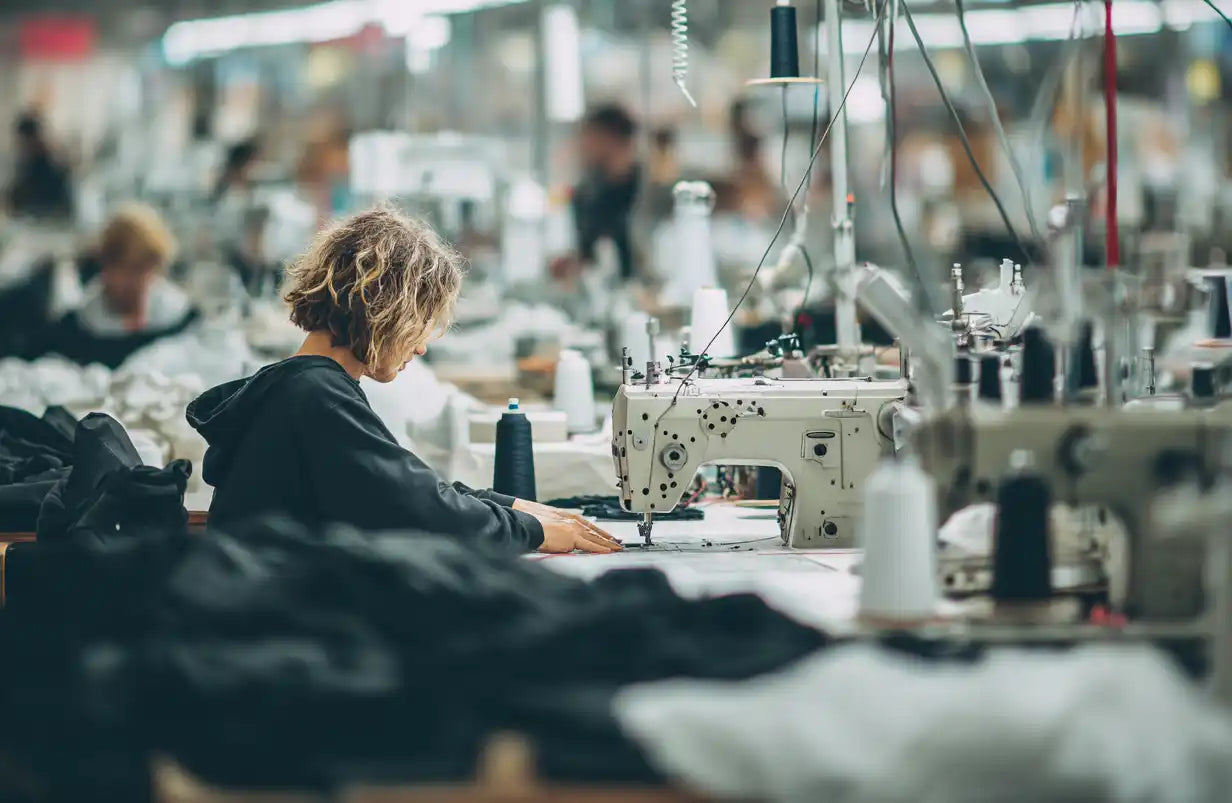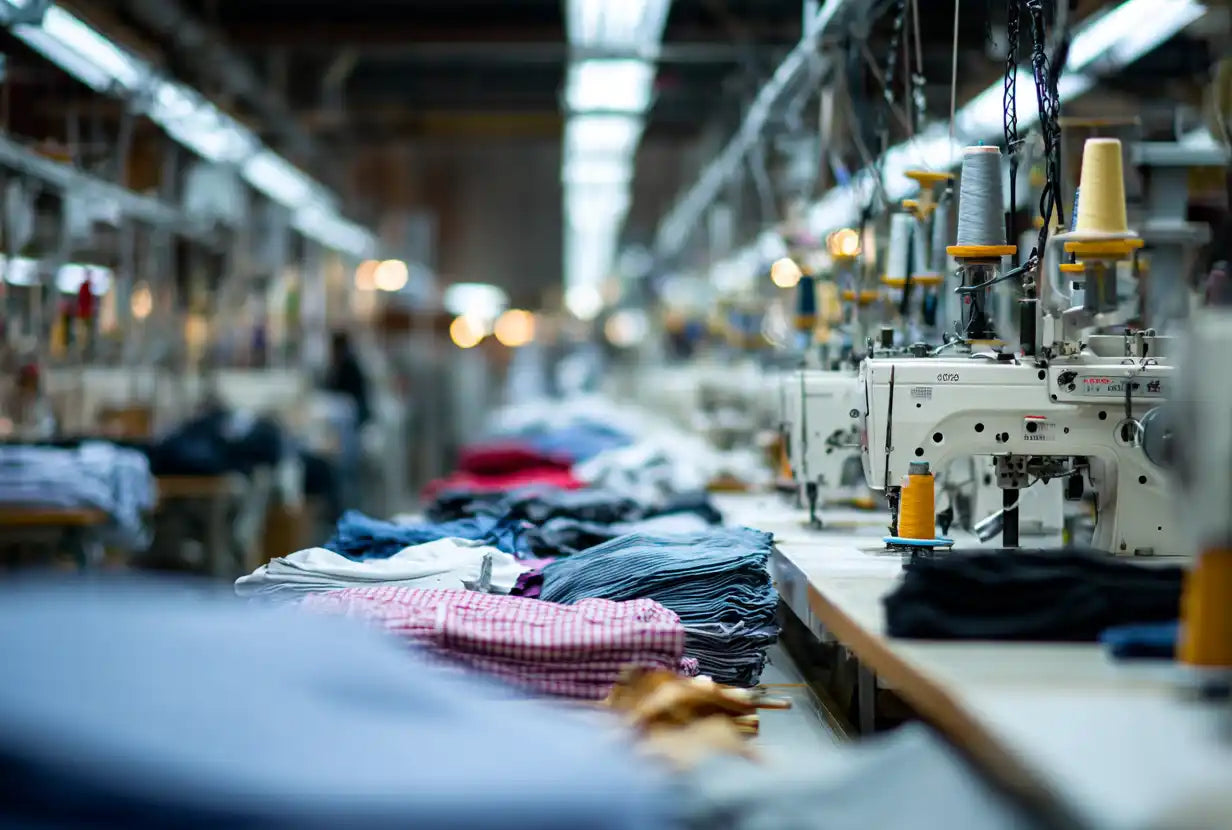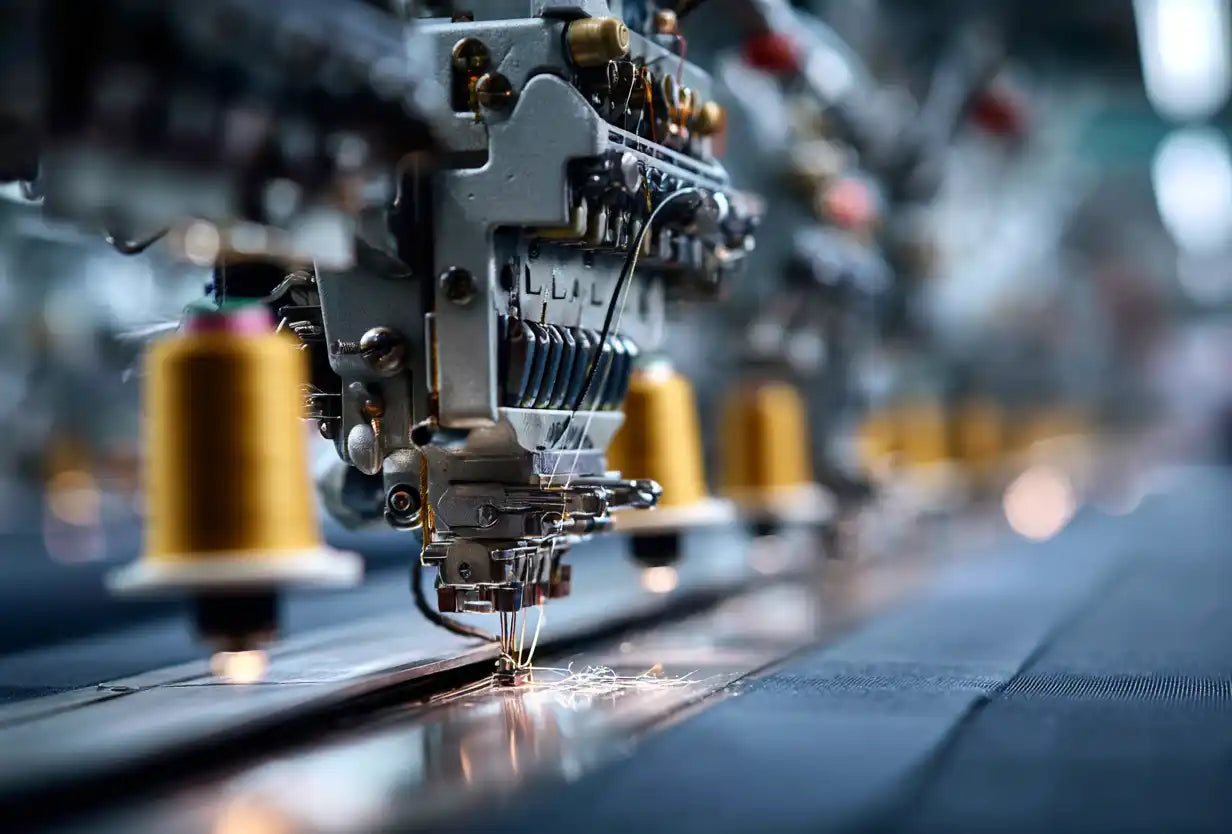Introduction
T-shirts are one of the most versatile garments worldwide, combining comfort, style, and functionality. But how does a T-shirt go from raw cotton to a finished product on your rack in 2025? Today's manufacturing integrates advanced technology, AI-driven quality control, sustainability, and customization. This guide covers the full T-shirt production journey—from fiber sourcing to eco-conscious packaging—and highlights the latest 2025 trends like 3D knitting, AI defect detection, and on-demand manufacturing.
Quick Summary: 6-Step Manufacturing Process
The T-shirt manufacturing process in 2025 includes: 1) sourcing cotton or alternative fibers, 2) spinning and knitting into fabric, 3) printing designs via advanced methods, 4) cutting and sewing, 5) AI-assisted quality control, and 6) sustainable packaging. Modern trends include 3D knitting, DTF printing, and on-demand production for efficiency and customization.
T-Shirt Production Timeline 2025
| Phase | Duration | Key Activities | Technology Used |
|---|---|---|---|
| Material Sourcing | 2-4 weeks | Cotton harvesting, fiber selection, certification verification | Automated harvesting, blockchain tracking |
| Fabric Production | 3-5 weeks | Spinning, knitting, dyeing, finishing treatments | 3D knitting, waterless dyeing, laser finishing |
| Printing & Design | 1-3 weeks | Design application, color matching, curing | DTF printing, AI color matching, UV curing |
| Cutting & Assembly | 1-2 weeks | Pattern cutting, sewing, quality inspection | Automated cutting, robotic sewing, computer vision |
| Quality Control | 3-7 days | Defect detection, sizing verification, final inspection | AI inspection, 3D body scanning, automated sorting |
| Packaging & Shipping | 2-7 days | Folding, labeling, sustainable packaging, logistics | Automated packaging, eco-materials, smart logistics |
Total Production Time: 8-15 weeks (traditional) vs 2-4 weeks (on-demand manufacturing)
Step 1: Sourcing Raw Materials
Cotton Harvesting
Cotton is the dominant fiber for T-shirts. In 2025:
- Automated Picking: Modern machines harvest cotton efficiently and separate seeds.
- Fact: About 0.5 lbs (8 oz.) of cotton produces a standard T-shirt.
- Yarn Quality: Ring-spun cotton yields soft, durable fabrics; open-end cotton is more cost-efficient.
Alternative & Performance-Oriented Fabrics
Manufacturers increasingly use high-performance or sustainable fibers:
- Organic Cotton: Certified by GOTS for eco-friendly production.
- Bamboo & Modal Fibers: Naturally soft, breathable, and biodegradable.
- Recycled Polyester: Reduces textile waste and supports activewear elasticity.
Step 2: Transforming Cotton into Fabric
The transformation from raw fiber to fabric includes:
- Spinning: Carded and combed fibers are spun into yarn. Ring-spun is softer; open-end is faster and cheaper.
- Knitting: Circular or flat-bed machines knit yarn into fabric.
- Pre-Treatment: Fabric is washed, bleached, and prepared for dyeing.
- Finishing: Heat and chemical treatments improve softness, stretch, and shrink resistance.
Expert Insight: 3D knitting technology enables seamless T-shirts, reducing production time and eliminating side seams for comfort.
Step 3: Printing and Design Techniques
T-shirt printing has evolved for 2025 trends:
- Pigment Printing: Cost-effective, quick for bulk orders; colors may fade faster.
- Reactive Printing: Chemically bonds dyes for vibrant, long-lasting results.
- Screen Printing: Ideal for detailed, high-volume designs.
- Direct-to-Garment (DTG): Digital printing for small runs and complex graphics.
- Direct-to-Film (DTF) Printing: Emerging 2025 trend for high-quality, customizable prints on various fabrics.
Tip: Consider your design volume, fabric type, and durability needs when selecting a printing method.
Step 4: Cutting, Sewing, and Fits
Fabric is cut and sewn into finished garments:
- Automated Cutting: Reduces waste and ensures precision.
- Assembly: Side seams, sleeves, and neckbands are stitched; reinforced hems improve durability.
- T-Shirt Fits: Crewneck, V-neck, athletic, oversized, and slim fit all require slightly different cut-and-stitch methods.
- Seamless Garments: 3D knitting reduces seams for comfort and flexibility.
Pro Tip: Automated cutting + skilled sewing ensures consistent quality across large production runs.
Step 5: Quality Control and Packaging
- AI-Driven Inspection: Cameras detect defects like uneven stitching, color inconsistencies, and fabric flaws.
- Batch Testing: Ensures colorfastness, stretch, and durability.
- Packaging: Folded, labeled, and shipped in biodegradable materials.
Step 6: Sustainable Manufacturing Practices
Sustainability is key for 2025 production:
- Water Reduction: Dyeing uses advanced techniques, reducing water consumption by ≈50% (Textile Exchange).
- Eco-Friendly Materials: Organic cotton, bamboo, recycled polyester.
- Biodegradable Packaging: Minimal environmental impact.
- On-Demand Manufacturing: Reduces inventory waste by producing only what is ordered.
Quality Standards & Testing Protocols
| Test Type | Standard | Acceptable Range | Testing Method |
|---|---|---|---|
| Colorfastness | AATCC 61 | Grade 4+ after 5 washes | Launder-Ometer testing |
| Dimensional Stability | AATCC 135 | <5% shrinkage | Multiple wash cycles |
| Seam Strength | ASTM D1683 | ≥25 lbs force | Tensile testing |
| Pilling Resistance | ASTM D4970 | Grade 4+ | Martindale testing |
| GSM Weight | ASTM D3776 | ±5% of target | Fabric weight measurement |
Sustainability Metrics in Manufacturing
| Manufacturing Method | Water Usage | Carbon Footprint | Energy Consumption | Waste Generation |
|---|---|---|---|---|
| Traditional Manufacturing | High (2,700L/kg) | 4.5 kg CO₂/shirt | 45 kWh/kg | 15% fabric waste |
| Sustainable Manufacturing | Low (1,200L/kg) | 2.2 kg CO₂/shirt | 28 kWh/kg | 8% fabric waste |
| On-Demand Production | Very Low (800L/kg) | 1.8 kg CO₂/shirt | 32 kWh/kg | 3% fabric waste |
| 3D Knitting Technology | Low (950L/kg) | 1.5 kg CO₂/shirt | 25 kWh/kg | 2% fabric waste |
Role of AI and Automation in 2025
- AI Quality Control: Real-time defect detection.
- 3D Body Scanning: Enables precise sizing and customized fits.
- Automated Logistics: Optimizes warehouse efficiency and shipping.
- Trend Prediction: AI analyzes social data to forecast popular colors and styles for faster product-market fit.
Traditional vs AI Manufacturing Comparison
| Aspect | Traditional Manufacturing | AI-Driven Manufacturing | Improvement |
|---|---|---|---|
| Defect Detection | Manual inspection (85% accuracy) | Computer vision (99% accuracy) | +14% accuracy |
| Production Speed | 8-15 weeks | 2-6 weeks | 67% faster |
| Material Waste | 15-20% | 3-8% | 70% reduction |
| Quality Consistency | Variable | Highly consistent | Significant improvement |
| Customization | Limited | High (mass customization) | Major enhancement |
Comparison Table: Printing Methods
| Method | Cost per T-Shirt | Durability | Color Vibrancy | Best Use Case |
|---|---|---|---|---|
| Pigment | Low | Medium | Medium | Bulk orders, simple designs |
| Reactive | Medium | High | High | Premium T-shirts, long-lasting |
| Screen | Medium-High | High | High | Multi-color, detailed designs |
| DTG | High | Medium | High | Small batches, full-color art |
| DTF | Medium | High | Very High | 2025 trend, versatile fabrics |
Recommended Visual Content Strategy
Essential Diagrams & Infographics
- T-shirt manufacturing process flowchart
- Traditional vs AI manufacturing comparison charts
- Printing method visual comparison
- Sustainability impact infographics
- Production timeline visualization
- Quality testing process diagrams
Technology Illustrations
- 3D knitting technology diagrams
- AI quality control system overview
- Automated cutting machine operations
- Sustainable dyeing process visuals
- On-demand manufacturing workflow
Frequently Asked Questions
How long does T-shirt production take in 2025?
Traditional manufacturing takes 8-15 weeks from raw material to finished product. On-demand and AI-driven production can reduce this to 2-6 weeks. The timeline depends on fabric sourcing, printing complexity, and manufacturing technology used.
What's the difference between DTG and screen printing?
DTG (Direct-to-Garment) is digital printing ideal for small batches and complex, full-color designs. Screen printing uses stencils and is better for high-volume orders with simpler designs. DTG offers more detail while screen printing provides better durability for large runs.
How does AI improve T-shirt manufacturing quality?
AI enables real-time defect detection with 99% accuracy, predicts optimal cutting patterns to reduce waste, analyzes trends for better product planning, and automates quality control processes that were previously manual and error-prone.
What are the main sustainability benefits of modern manufacturing?
Modern manufacturing reduces water usage by 50-70%, cuts carbon emissions by 40-60%, decreases fabric waste from 15% to 2-8%, and uses eco-friendly materials and biodegradable packaging. On-demand production also eliminates inventory waste.
Which printing method is most cost-effective for large orders?
Screen printing is most cost-effective for large orders (500+ units) due to lower per-unit costs after initial setup. For medium quantities (100-500 units), DTF printing offers good balance of cost and quality. For small batches, DTG is preferred despite higher per-unit cost.
How does 3D knitting technology work?
3D knitting creates seamless garments by knitting the entire T-shirt in one piece, eliminating side seams. This reduces production steps, minimizes fabric waste, and creates more comfortable garments with better fit and flexibility compared to traditional cut-and-sew methods.
Conclusion & Next Steps
T-shirt manufacturing in 2025 represents a significant evolution from traditional methods to technology-driven, sustainable processes. The integration of AI, automation, and eco-friendly practices has transformed how T-shirts are produced, making the process faster, more efficient, and environmentally responsible.
Your Manufacturing Decision Framework:
- Evaluate your production volume - choose methods that scale with your needs
- Consider sustainability priorities - select manufacturers with verified eco-credentials
- Assess technology capabilities - prioritize manufacturers with modern automation
- Analyze cost vs speed trade-offs - balance production timelines with budget constraints
- Verify quality standards - ensure manufacturers meet international quality protocols
- Plan for scalability - choose partners that can grow with your brand
Remember: The right manufacturing approach depends on your specific needs for quality, speed, sustainability, and cost. Modern technologies like AI and 3D knitting offer significant advantages, but traditional methods still have their place for certain applications and budgets.
Ready to start your T-shirt production? Download our complete manufacturing checklist and begin evaluating production partners with confidence in today's advanced manufacturing landscape.

